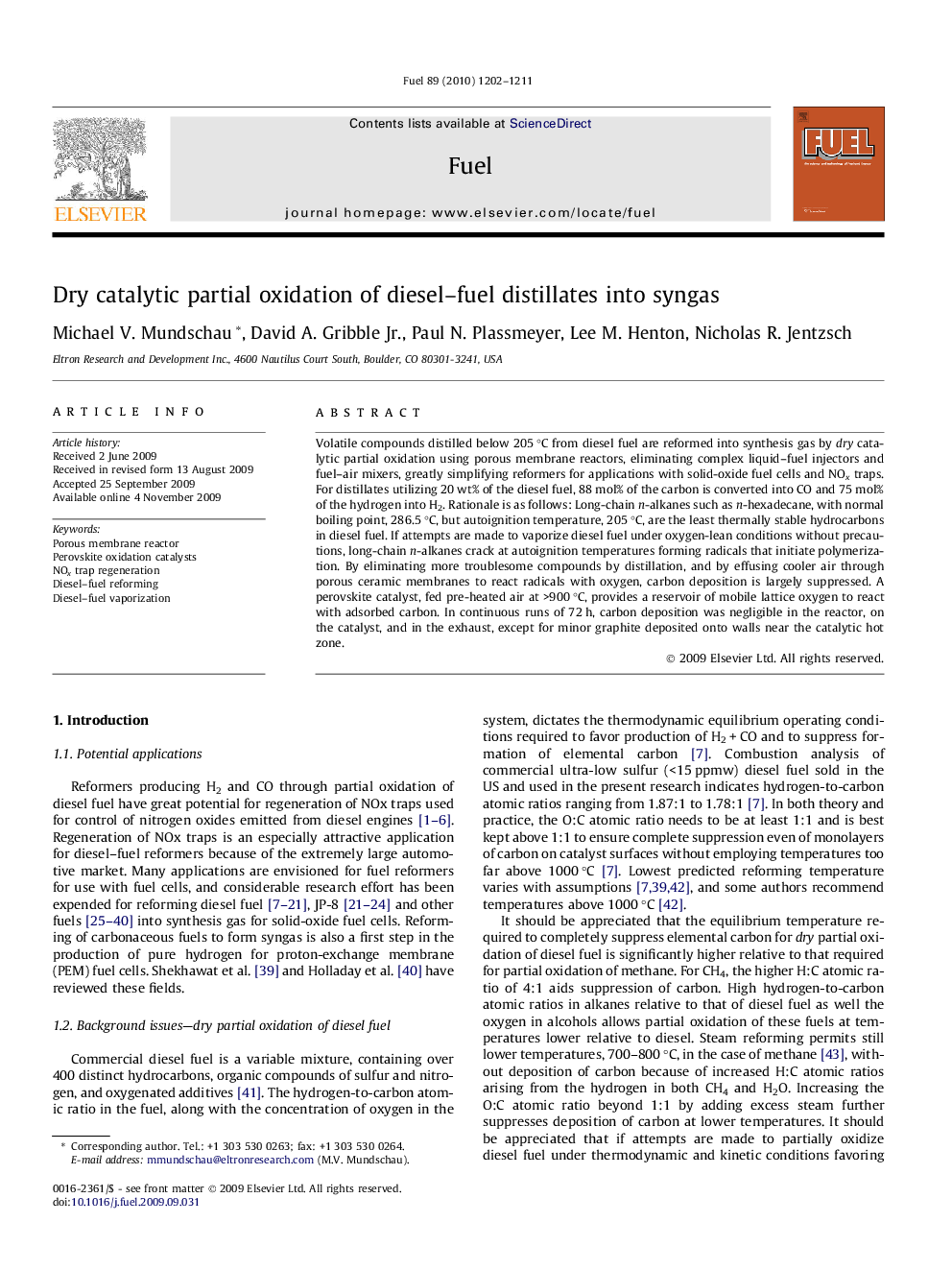| کد مقاله | کد نشریه | سال انتشار | مقاله انگلیسی | نسخه تمام متن |
|---|---|---|---|---|
| 207235 | 461210 | 2010 | 10 صفحه PDF | دانلود رایگان |

Volatile compounds distilled below 205 °C from diesel fuel are reformed into synthesis gas by dry catalytic partial oxidation using porous membrane reactors, eliminating complex liquid–fuel injectors and fuel–air mixers, greatly simplifying reformers for applications with solid-oxide fuel cells and NOx traps. For distillates utilizing 20 wt% of the diesel fuel, 88 mol% of the carbon is converted into CO and 75 mol% of the hydrogen into H2. Rationale is as follows: Long-chain n-alkanes such as n-hexadecane, with normal boiling point, 286.5 °C, but autoignition temperature, 205 °C, are the least thermally stable hydrocarbons in diesel fuel. If attempts are made to vaporize diesel fuel under oxygen-lean conditions without precautions, long-chain n-alkanes crack at autoignition temperatures forming radicals that initiate polymerization. By eliminating more troublesome compounds by distillation, and by effusing cooler air through porous ceramic membranes to react radicals with oxygen, carbon deposition is largely suppressed. A perovskite catalyst, fed pre-heated air at >900 °C, provides a reservoir of mobile lattice oxygen to react with adsorbed carbon. In continuous runs of 72 h, carbon deposition was negligible in the reactor, on the catalyst, and in the exhaust, except for minor graphite deposited onto walls near the catalytic hot zone.
Journal: Fuel - Volume 89, Issue 6, June 2010, Pages 1202–1211